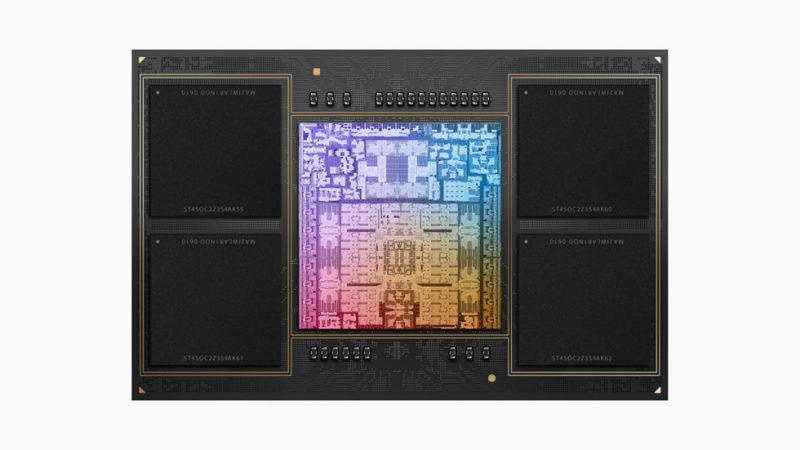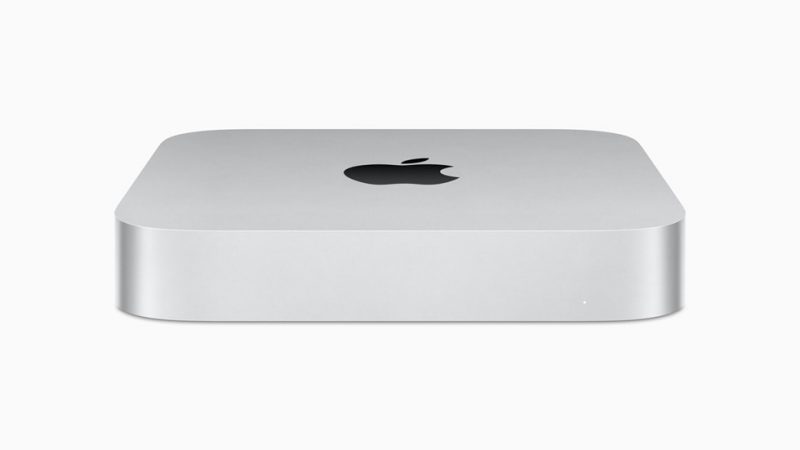 APPS
APPS
 APPS
APPS
 APPS
APPS
Apple Inc. today announced two powerful new chips in its M2 family, the M2 Pro and M2 Max, that scale up the company’s system-on-chip architecture for power-efficient performance in the company’s newly unveiled MacBook Pro and Mac mini.
Both chips extend the feature set of the M2, which was unveiled in June 2022, pushing the power and efficiency of the chips over the original M2 with more powerful central processing units and graphical processing units, double the memory bandwidth and up to 96 gigabytes of unified memory.
Both chips are also built using the second-generation five-nanometer process technology to fit as many transistors as possible onto the chips as possible.
“Only Apple is building SoCs like M2 Pro and M2 Max,” said Johny Srouji, Apple’s senior vice president of hardware technologies. “They deliver incredible pro performance along with industry-leading power efficiency. With an even more powerful CPU and GPU, support for a larger unified memory system, and an advanced media engine, M2 Pro and M2 Max represent astonishing advancements in Apple silicon.”

The new M2 Pro features about 40 billion transistors, which is nearly 20% more than the M1 Pro and doubles the amount in the M2. It runs about double the memory bandwidth of the M2 at 200 gigabits per second of memory bandwidth and up to 32 gigabytes of low-latency memory.
The CPU in the M2 Pro consists of 10- to 12-cores of up to eight high-performance cores and four high-efficiency cores. The GPU can be configured with up to 19 cores, which is three more than the GPU in the M1, and includes a larger L2 cache. According to Apple, its graphics speeds are up to 30% higher than that of the M1 Pro, representing a huge increase in image processing performance and enabling console-quality gaming performance.
M2 Max weighs in at 67 billion transistors, 10 billion more than the M1 Max and more than three times those found in the M2. The M2 Max is capable of more than 400/GBs or memory bandwidth, which makes it the strongest chip that Apple currently produces, and it supports up to 96 gigabytes of memory.
The chip also features the same 12-core CPU as the M2 Pro, but its GPU is even bigger with up to 38 cores and consists of an even larger L2 cache. According to Apple, its graphics speeds can exceed the M1 Max by over 30% and it can also support up to 96 gigabytes of memory.
Both chips include Apple’s 16-core Neural Engine, which can handle up to 15.8 trillion operations per second and is up to 40% faster than the previous generation of chips for machine learning tasks. The M2 Pro also has a powerful media engine capable of rendering video using hardware-accelerated H.264, HEVC, and ProRes video encoding and decoding at high speeds with multiple playback in 4K and 8K ProRes while using low power. M2 Max provides two video playpack engines and two ProRes engines, bringing up to two times faster video encoding speeds of the M2 Pro.
The M2 Pro and M2 Max also feature Apple’s Secure Enclave technology, which is a dedicated secure subsystem that is isolated from the main processor and capable of providing an extra layer of security should the system kernel be compromised.
Apple’s newest additions to the MacBook Pro family feature two new models, a 14- and 16-inch laptop that feature the new M2 Pro and M2 Max, the just-announced additions to the M2 family of Apple silicon.
The new MacBook Pro retains the same sleek look of previous models, with a grey or silver aluminum exterior with squared rounded edges and a slim screen and a standard keyboard. Both laptops feature a Liquid Retina XDR display, which supports up to 8K video and advanced HDMI for the first time. The display also uses Apple’s ProMotion technology that automatically adjusts refresh rates to content motion to keep viewing smooth to up to 120Hz.
The laptops also contain studio-quality three-mic arrays that use directional beamforming to minimize background noise for calls and recording so that voices come through clearly. As for listening to music and audio, there is a six-speaker sound system consisting of four force-canceling woofers for bass delivery and high-performance tweeters for vocals. Spatial audio produces three-dimensional sound stages using Dolby Atmos in order to recreate realistic sound.
As for connectivity the MacBook Pro now features WiFi 6E for faster wireless as well as advanced HDMI to support 8K displays up to 60Hz and 4K displays up to 240Hz. Ports include three Thunderbolt 4 ports for high-speed connections to peripherals, an SDXC slot and MagSafe 3 charging.
Apple said that the 14-inch model can last up to 18 hours and the 16-inch model has a bigger battery with up to 18 hours of life.
The new 14-inch MacBook Pro with M2 Pro starts at $1,999 and the 16-inch MacBook Pro with M2 Max starts at $2,499. Customers can order both laptops today, with availability beginning Tuesday, Jan. 24.

Apple is bringing the M2 and all-new M2 Pro chips to its small form-factor computer, the Mac mini, for the first time.
“With incredible capabilities and a wide array of connectivity in its compact design, Mac mini is used in so many places, in so many different ways,” said Greg Joswiak, Apple’s senior vice president of worldwide marketing. “Bringing even more performance and a lower starting price, Mac mini with M2 is a tremendous value. And for users who need powerful pro performance, Mac mini with M2 Pro is unlike any other desktop in its class.”
Compared to previous models of the Mac mini, the M2 model can deliver image editing 50% faster in Adobe Photoshop than the previous generation. Using the M2 ship also adds ProRes acceleration, as a result, tasks such as video editing in Final Cut Pro are twice as fast. Using the new silicon, users can play up to two streams of 8K ProRes 422 video at 30 frames per second, or 12 streams 4K resolution at 30 fps.
When compared to the Mac mini with M1, Apple says that users will see up to 2.4 times faster ProRes transcode in Final Cut Pro, up to 50% faster filter and function performance in Photoshop and up to 35% faster gameplay in games such as “Resident Evil Village.”
Mac mini with M2 Pro will have even more dramatic performance boosts, according to Apple, with up to five streams of 8K ProRes video at 30 fps, or up to 23 streams of 4K ProRes video at 30 fps. With these speeds, the new Mac mini with the M2 Pro is up to 14 times faster than the fastest Intel-based Mac mini.
Both new Mac minis feature a wide range of ports for connectivity. The M2 model includes two Thunderbolt 4 ports and supports up to two displays, while the M2 Pro model includes four Thunderbolt 4 ports and will support up to three displays. With the power of the M2 Pro, the Mac mini can also support one 8K display, a first for Macs.
Both models also have USB-A ports, an HDMI port, a Gigabit Ethernet port for network connectivity (with a 10GB option) and an upgraded headphone jack that can support high-impedance headphones. Both models also have internal wireless cards capable of WiFi 6E and Bluetooth 5.3.
The Mac mini with M2 starts at $599 and the Mac mini with M2 Pro starts at $1,299. Both models are available for order today and will start arriving for customers on Jan. 24.
THANK YOU